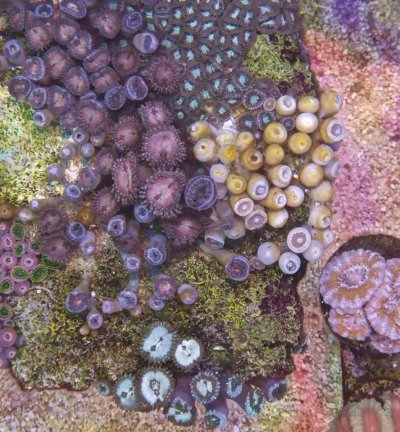- Joined
- Feb 19, 2018
- Messages
- 123
- Reaction score
- 12
Same thing happens to me, it seems to hit one variety at a time. My sps etc are doing fine. I use RO/DI water etc
Here is an example of a few months apart. In the top pic, my WWC purple monsters melted first (bare portion of rock bottom left).
bottom pic all the blue zoas on the tank bottom melted and now the red/orange variety on the rock are starting to melt.


Sorry to see and I feel your pain.
This summer I've decided that Im not going to bother.. if they die they die... I will keep more sps and lps in the new systems and they are going to be coral bays so try not to freak out to much when I loose some colonies this way..
Until someone can give me some advice on what to do.. I've tried iodine and hydrogen peroxid.. but that kills them even faster.




















